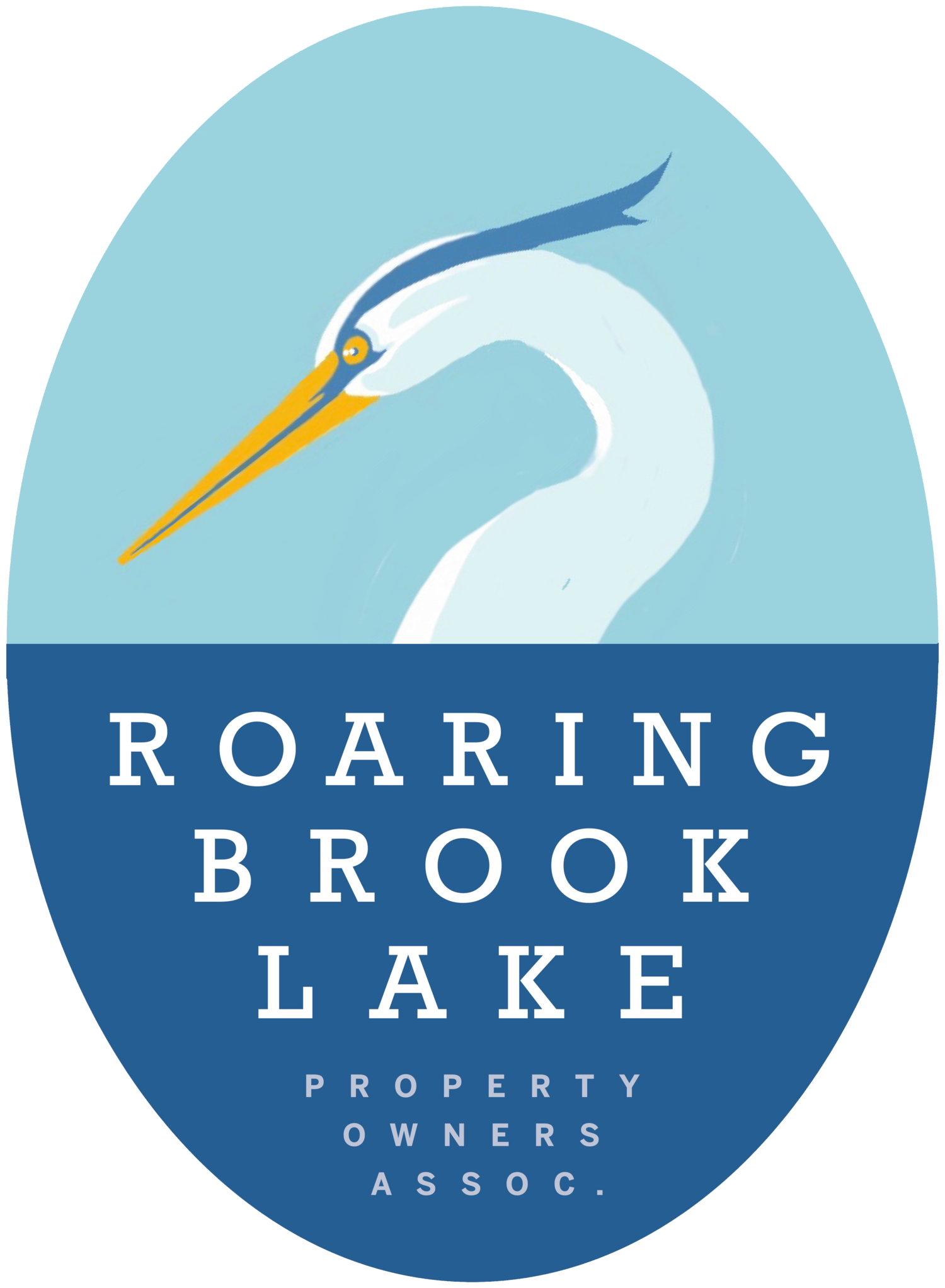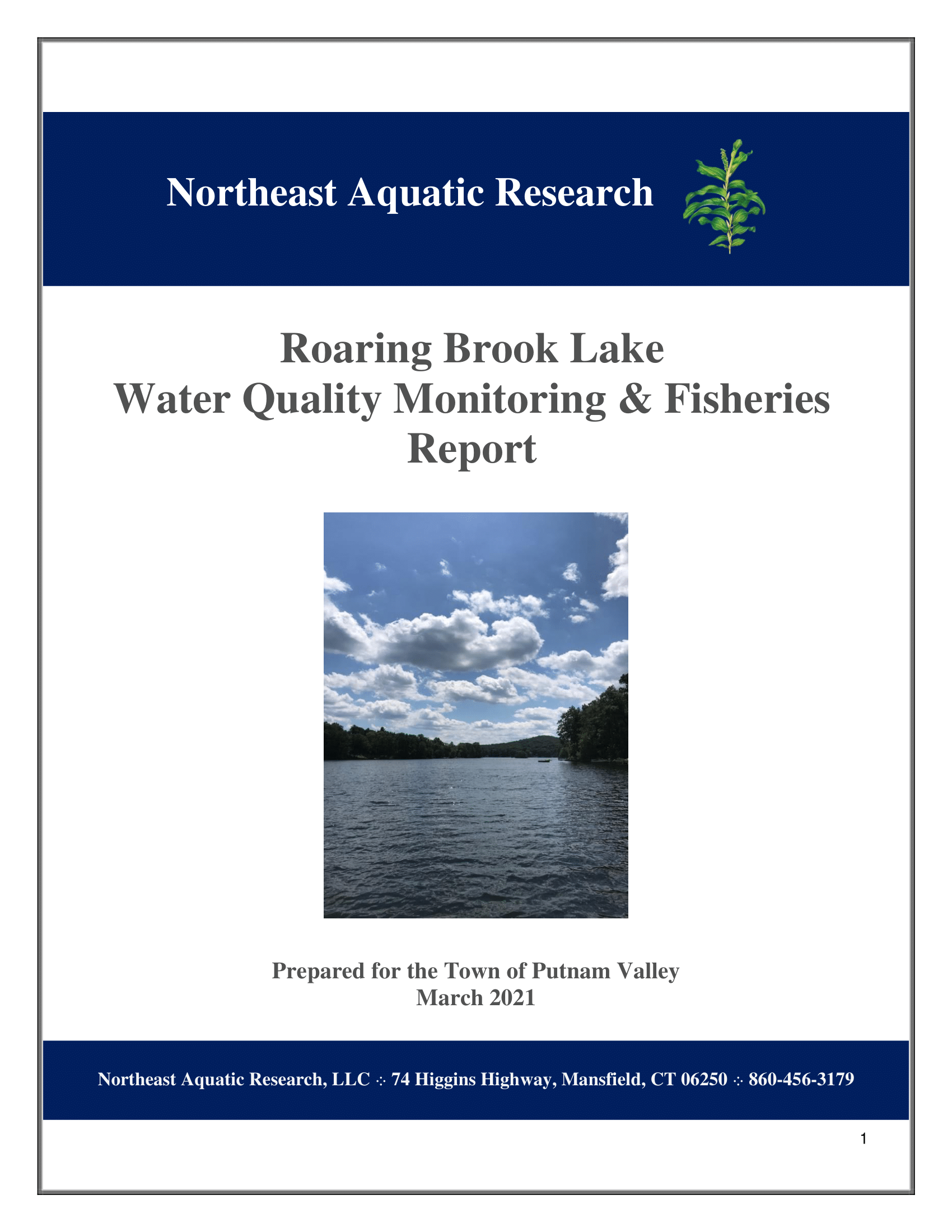STATE OF THE LAKE 2021
with A.J. Reyes
On April 10, 2021, A. J. Reyes, the lake manager of Roaring Brook Lake, spoke to 49 attendees on Zoom about his recent Roaring Brook Lake findings and thoughts for the future of the lake.
A. J. greeted the audience and focused in on the key importance of the nutrient pollutants, phosphorus and nitrogen, to lake clarity and health. Nutrient pollutants come from two sources: external and internal. His most recent studies document that internal loading at RBL is significantly higher than was thought—241 lbs/year vs 75 lbs/year. This new understanding has major implications for how we will approach remediation of the lake.
External loading refers to the nutrients that come from our actions in the present: the septic systems, stormwater management, and lawn fertilizers, for example. Internal loading is the release of nutrients from the mucky sediment at the bottom of the deepest part of the lake. In a way, those are the nutrients of the past, the “legacy” of all who were here decades before us. Those nutrients in the deep sediment don’t go away. Year after year, they accumulate. External loading deserves our attention. However, A. J. emphasized, even if we were to do everything possible to stop external loading, we would come to a point, a precipice, where doing anything differently would have less and less effect. At that point, unless we addressed the lake’s internal loading, the decline of the lake would take over.
A. J. then discussed various options available for addressing internal loading. He said that while dredging all of the sediment out of the deepest part of the lake is appealing (for several reasons), it would be almost impossible to actually accomplish, and enormously expensive, much more than RBL could manage. At this time, the most practical way to deal with the problem of internal loading is to introduce an element, Aluminum or Lanthanum, that would permanently bind the phosphorus and keep it sequestered at the bottom of the lake, unavailable.
A. J. went over the RBL 2020 fishing survey in some detail. It is the first fishery study that has ever been done at RBL. Its main observation was a huge bass population, but almost all small and “skinny”, corroborating the observations of fishermen around the lake. Hopefully, as the carp die off, and aquatic plants return to RBL, there will be more habitat for bait fish to hide, favoring the good hunters among the bass and allowing them to grow larger. Of note is that stocking bait fish is not the answer. The 325 lbs. of bait fish that RBL traditionally stocks result in only a tiny increase in weight of 0.16 lb. per bass, “a drop, in a drop, in the bucket”. Likewise, it won’t make much difference, but it won’t hurt, for RBL fishing folks to release larger bass, but cull the smaller ones.
A. J.’s conclusions: (1) 2020 monitoring firmly establishes internally loaded phosphorus as being about 50% of the phosphorus in the lake, much more than the 25% previously thought. (2) Manage external loading now but begin to discuss and plan for management of internal loading soon. (3) Continue frequent pumping and inspection of septic systems, with replacement of aging, ineffective systems and consider establishing a RBL District fund to supplement costs of septic system replacement. (4) Address four specific hot spots that A.J. has identified, where sediment and nutrients are entering the lake.
Slideshow Presentation by A.J. Reyes.
View PDF (opens in new window)










































































